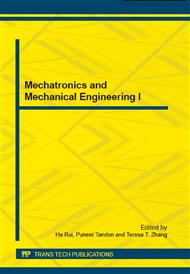p.304
p.313
p.318
p.326
p.331
p.336
p.341
p.349
p.355
Design for Drive Circuit of Solid Micro-Thruster Ignition System
Abstract:
Aiming at the lack of standard design method and the shortcomings of main functions of the existing drive circuit, a “Element-level Design under Transmission Voltage Switch Theory” is set forth and a smallest circuit structure namely as drive-unit, which contains Superstratum-unit, Substratum-unit and LC-unit, is designed in this paper to achieve the necessary functions. The drive circuit of n×n ignition bridges has been got from the structure expansion formula along with the expected life estimation. The Ebers-Moll Model of transistor and the internal circuit of MOSFET were used to make a theoretical analysis and the conclusion of such analysis was verified by simulation subsequently. Actual measurement has been made and the results show that the circuit in simple structure has provided a strong loading ability and accurate output; some elements of the circuit have been heated when the circuit was working; and the response time of the circuit was of the microsecond-level.
Info:
Periodical:
Pages:
331-335
Citation:
Online since:
October 2014
Authors:
Price:
Сopyright:
© 2014 Trans Tech Publications Ltd. All Rights Reserved
Share:
Citation:


